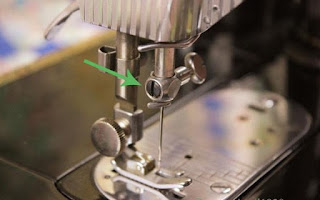 Bangladesh International Garment & Textile Machinery Expo (BIGTEX) is being organized by RedCarpet365 Ltd. as 5th edition on 07-10th November, 2019 at International Convention City Bashundhara-ICCB, Dhaka. World wide exhibitors on Garment and Textile Machinery, Equipment, Technology & Accessories will participate in this event. This is one of the mega exhibition in Bangladesh due to the high interest of buyers and sellers from Home and Abroad. Following the huge response on previous editions this year the organizers are expecting more number of exhibitors and visitors to be participated in this up coming event.
Bangladesh International Garment & Textile Machinery Expo (BIGTEX) is being organized by RedCarpet365 Ltd. as 5th edition on 07-10th November, 2019 at International Convention City Bashundhara-ICCB, Dhaka. World wide exhibitors on Garment and Textile Machinery, Equipment, Technology & Accessories will participate in this event. This is one of the mega exhibition in Bangladesh due to the high interest of buyers and sellers from Home and Abroad. Following the huge response on previous editions this year the organizers are expecting more number of exhibitors and visitors to be participated in this up coming event.Targeting the whole Textile, Garment & Apparel industry of Bangladesh, BIGTEX have 3 concurrent expos named as 5th Bangladesh Int’l Fabric & Yarn Expo, 5th Bangladesh Int’l Print, Pack & Sign Expo and 5th Bangladesh Int’l Dyes, Pigments and Chemicals Expo.
Being the second largest apparel exporter in the world, top denim exporter to EU and world's 2nd largest knitwear exporter, Bangladesh Garment & Textile Industry have to face lot of competitions with close competing countries like India, Vietnam, Cambodia & Sri Lanka. Keeping in concern the High Demand of “Made in Bangladesh” products, we have to keep this growth in continuation basis and need proper Machinery, Raw Materials, Yarn, Fabric, Dyes & Chemicals supplies at Best Price.
Bangladeshi entrepreneurs can grab the opportunity to source their required machinery tools from the exhibition. This is a very good platform for the suppliers of machinery and manufacturers of garments and textile to be understood the recent market trend. This event is supported by BKMEA and powered by Well Thread, a company that delivers good quality threads to the garment industry in Bangladesh.
Event Summary:
- Event : Bangladesh International Garment & Textile Machinery Expo
- Edition: 5th
- Location: Dhaka, Bangladesh
- Venue: International Convention City Bashundhara (ICCB)
- Date: 7-10 November, 2019
- Time: 10am - 7pm
- Visitors: Business and Trade Visitors
- Organized By: RedCarpet365 Ltd
- Official Web: http://www.redcarpet365.com/bigtex.html
- 20th Textech Bangladesh 2019 International Expo
- 16th Dhaka International Yarn and Fabric Show 2019
- International Garments and Textile Machinery Exhibition in Bangladesh 2019
- Bangladesh Denim Exp - 10th Edition
Bangladesh International Garment & Textile Machinery Expo, 2019
Advertisements
 Bangladesh International Garment & Textile Machinery Expo (BIGTEX) is being organized by RedCarpet365 Ltd. as 5th edition on 07-10th November, 2019 at International Convention City Bashundhara-ICCB, Dhaka. World wide exhibitors on Garment and Textile Machinery, Equipment, Technology & Accessories will participate in this event. This is one of the mega exhibition in Bangladesh due to the high interest of buyers and sellers from Home and Abroad. Following the huge response on previous editions this year the organizers are expecting more number of exhibitors and visitors to be participated in this up coming event.
Bangladesh International Garment & Textile Machinery Expo (BIGTEX) is being organized by RedCarpet365 Ltd. as 5th edition on 07-10th November, 2019 at International Convention City Bashundhara-ICCB, Dhaka. World wide exhibitors on Garment and Textile Machinery, Equipment, Technology & Accessories will participate in this event. This is one of the mega exhibition in Bangladesh due to the high interest of buyers and sellers from Home and Abroad. Following the huge response on previous editions this year the organizers are expecting more number of exhibitors and visitors to be participated in this up coming event.Targeting the whole Textile, Garment & Apparel industry of Bangladesh, BIGTEX have 3 concurrent expos named as 5th Bangladesh Int’l Fabric & Yarn Expo, 5th Bangladesh Int’l Print, Pack & Sign Expo and 5th Bangladesh Int’l Dyes, Pigments and Chemicals Expo.
Being the second largest apparel exporter in the world, top denim exporter to EU and world's 2nd largest knitwear exporter, Bangladesh Garment & Textile Industry have to face lot of competitions with close competing countries like India, Vietnam, Cambodia & Sri Lanka. Keeping in concern the High Demand of “Made in Bangladesh” products, we have to keep this growth in continuation basis and need proper Machinery, Raw Materials, Yarn, Fabric, Dyes & Chemicals supplies at Best Price.
Bangladeshi entrepreneurs can grab the opportunity to source their required machinery tools from the exhibition. This is a very good platform for the suppliers of machinery and manufacturers of garments and textile to be understood the recent market trend. This event is supported by BKMEA and powered by Well Thread, a company that delivers good quality threads to the garment industry in Bangladesh.
Event Summary:
- Event : Bangladesh International Garment & Textile Machinery Expo
- Edition: 5th
- Location: Dhaka, Bangladesh
- Venue: International Convention City Bashundhara (ICCB)
- Date: 7-10 November, 2019
- Time: 10am - 7pm
- Visitors: Business and Trade Visitors
- Organized By: RedCarpet365 Ltd
- Official Web: http://www.redcarpet365.com/bigtex.html
- 20th Textech Bangladesh 2019 International Expo
- 16th Dhaka International Yarn and Fabric Show 2019
- International Garments and Textile Machinery Exhibition in Bangladesh 2019
- Bangladesh Denim Exp - 10th Edition
Advertisements






























